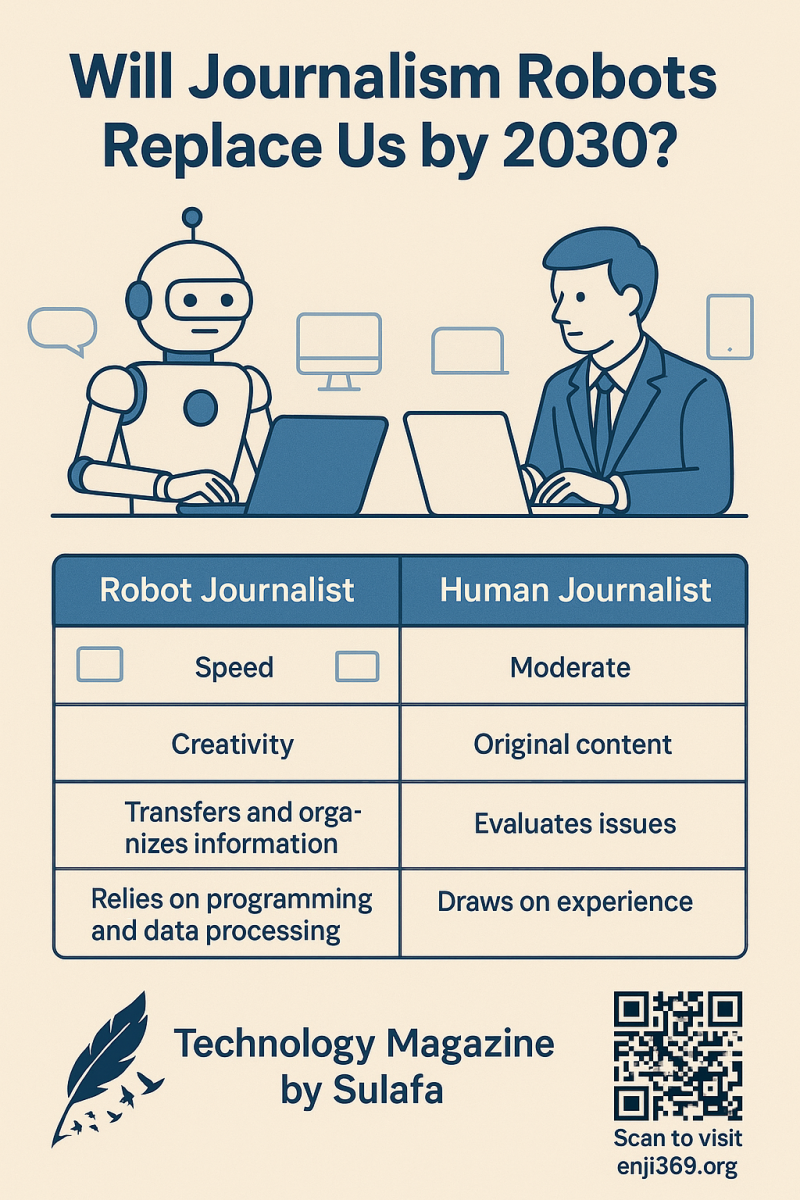
By Technology Magazine by Sulafa
In the spring of 2025, The Washington Post published more than 1,000 political and economic reports written by a smart program called Heliograf. This wasn’t a technical mishap—it marked the beginning of a fundamental shift in a profession long defined by human intuition: journalism.
So, by 2030, will we witness a world where journalists are replaced by machines? Will robots become the ones telling us stories, analyzing events, and delivering breaking news? Let’s dive into this seismic transformation—from bustling newsrooms to humming algorithms.
When AI Writes the Headlines
Automated journalism is no longer science fiction. It began with modest tasks like sports scores or financial earnings reports, and quickly evolved to include data analysis, financial summaries, and even opinion pieces derived from social media sentiment.
Since 2014, the Associated Press has used a platform called Wordsmith, which produces thousands of financial articles annually. It digests raw data and reshapes it into readable, publishable content. In short, one algorithm has become more productive than an entire newsroom.
Source: Associated Press – Automated Insights
Why Are Newsrooms Turning to Robots?
- Speed: Robots write in seconds and can generate thousands of texts rapidly.
- Cost: With declining ad revenue, reducing operational expenses has become essential.
- (Perceived) Objectivity: Algorithms are seen as unbiased, although that’s not always the case.
Can a Robot Be a Journalist?
Journalism isn’t just about relaying information—it’s about analysis, context, and sometimes challenging the status quo. Can AI:
- Expose corruption?
- Conduct meaningful interviews?
- Make ethical editorial decisions?
The answer for now: Not quite. AI depends entirely on the data it’s fed. It lacks moral reasoning and may inadvertently reproduce hate speech or fake news without human oversight.
Verified Research: A study by Oxford University found that 60% of AI-generated news articles they examined relied on unreliable sources due to a lack of human verification.
Source: Reuters Institute – Journalism, Media, and Technology Trends 2024
The Journalist’s New Role: Editor of Machines?
Journalists may not vanish—they may simply evolve. Their future roles could include:
- Supervising AI outputs
- Training algorithms on tone and cultural nuance
- Fact-checking robot-generated content
Thus, the journalist transforms from a writer to a technical-editor hybrid, blending creative skill with digital literacy.
Is This the End of Traditional Journalism?
A robot can’t witness a protest or capture the raw emotion of a survivor. But on the other hand, AI will soon be indispensable.
By 2030, the news landscape may look hybrid:
Robots write. Humans decide.
Our Take:
At Technology Magazine by Sulafa, we believe the future of journalism won’t be black or white. It will be a smart fusion of human creativity and machine efficiency. The challenge ahead lies in keeping journalism human, even as the ink becomes purely digital.
Add comment
Comments